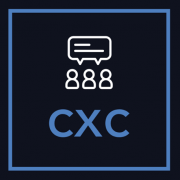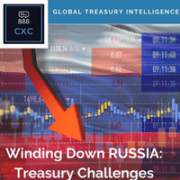Blockchain consortia need good governance: but how?
| 24-03-2020 | Carlo de Meijer | treasuryXL
Blockchain consortia are creating a massive hype in the market. Many enterprises are highly interested in this type of network willing to join these consortia in order to gain optimal benefits of this technology. However, there is still a large uncertainty among them how these consortia work and how they are governed. Up till recently the focus was mainly on governance solutions for public blockchain platforms like Hyperledger and Ethereum. Consortium blockchain governance however will become as or even more important to enterprises than public blockchain governance because they will work with this level of governance on a daily basis.
People in the field are increasingly aware that consortium project blockchain governance need to address quite different issues from public blockchains. But what are the main governance issues enterprises should think about ? So let’s take a deeper dive.
What are blockchain consortia?
Before going into more detail in the governance issue, it is good to say that there is no universal sort of blockchain governance. First of it all it depends on the type of blockchain solution that companies can use. Here we can distinct in fact between three main types of blockchain systems: open or public, private or permissioned and consortium or federated blockchains. While the public and private variant are ‘pretty self-explanatory’, the consortium blockchain needs more nuancing.
Blockchain consortia are defined as a type of network where multiple organisations maintain the system A group of companies thereby collaborate on advancing the state of blockchain technology adoption in the industry, establishing industry standards, drafting use cases, developing key infrastructure and also operating commercial blockchain platforms.
Consortium blockchains are in fact hybrid solutions, in-between public and private, i.e. between fully open, decentralized systems and fully centrally-controlled, thus taking the best of both worlds. Instead of only one organization, multiple organizations take part in the consortium. As a result, every organization gets similar treatment. So, there’s no single entity ruling over the network.
Types of blockchain consortia
There is however not one uniform type of blockchain consortium. Basically we can distinct between three types at present: technology-focused, business-focused and dual-focused.
The first type of blockchain consortia is the technology-focused. These offer reusable blockchain platforms, solutions based on technical standards. Mainly these have multipurpose use cases. This type of blockchain consortium exists solely for the purpose of helping blockchain reach global recognition. Quorum (based on Ethereum), R3 Corda and Hyperledger have emerged as some of the most popular blockchain development platforms. Each is suited to different industries and types of solutions, and developers are working with them around the world.
The second type is pure business-focused. These tend to develop blockchain solutions for a specific business issue. Instead of offering open-source platforms, many of them go for commercial purposes only. While the majority of these consortia so far are from the financial sector, many other industries like supply finance, trade finance, life science, healthcare etc. are joining in to work on blockchain-based systems and reap such benefits as shared resources, decreased development time and increased communication. Examples include consortia like Bankchain, We.Trade, Marco Polo, B3i etc.
The third one is dual-focused. Here, they focus on both technology and business when offering a platform or solution, combining the best of both worlds. So, in a way, they would offer an open-source platform suitable for any kind of solution but also commercial products as well. An example of dual-focused consortium is R3.
In this blog I will focus mainly on the second and third type with from a blockchain governance point-of-view the dual-focused blockchain consortium being the most interesting.
Benefits of blockchain consortia
Joining such a blockchain consortium could bring enterprises a number of interesting benefits, including cost savings, shared (and lower) risks, build critical mass of adoption and offer influencing standards.
First of all such a blockchain industry consortium would help enterprises cut all the expenses quite impressively. Instead of each company building their own solution from scratch, by being part of a consortium, they can share the development costs and time with other organisations.
As these consortia are mainly suited for industrial purposes, enterprises can easily link these up with their existing network more efficiently than public or private blockchain. This can lead to shorter development times and economies of scale. This allows smaller organisations to take advantage of the same system as larger ones. Another significant aspect of this blockchain industry consortium is that they can give a lower transactional fee. As it is a more controlled environment, and only permissioned people can get in, it would be much more stable.
What is blockchain governance?
But what is governance in general and why is it important? The term ‘governance’ is used in many ways. In the business environment it is often defined in the context of process and IT control. Governance is thereby a structure that every user or participant agrees to follow. It refers to all actions such as decision-making processes that are involved in creating, updating, and abandoning formal and informal rules of a system.
In the context of blockchain consortia we define governance as a set of rules that govern this partnership both organisational and operational. These rules focus on what is the subject of the regulation, who is involved, i.e. what are the roles and what are they responsible for, and, how will decisions be made? These rules can be code (e.g. smart contracts), laws (e.g. fees for malign actors), processes (what must be done when X happens), or responsibilities (who must do what).
Why is proper governance important for blockchain consortia?
One of the aims of governance is to establish a foundation of mutual trust, which allows companies to carry out their business processes using the blockchain solution. Its core purpose is to meet the user or participant’s needs with available resources as efficiently as possible and achieve the long-term sustainability of the structure. There are various reasons why good governance for blockchain consortia is urgently needed.
First of all: from an acceptance point of view.
As the size and complexity of blockchain have grown, better management calls for proper governance. Since the strategic value of the blockchain networks lies in its scaling, it is important to consider that an increasing network size correlates positively with an increase in coordination complexity. Hence, for the few high-potential applications in trade finance, insurance, supply chain and mobility services a proper establishment of sustainable governance principles for the deployment of a blockchain consortium is key.
Second: no one party can exert dominant control
Consortium blockchains have many of the same benefits of private blockchains. But there is something more. That is they could employ a group governance model over their network so no one party can exert dominant control over the others. This increases the trust of a consortium network significantly over a single entity private blockchain, while still maintaining the benefits of a private blockchain. Additionally, consortium blockchains are not restricted to only being visible to network members. Their transactions can be openly seen by the public, engendering increased trust.
Third: to solve the Coopetition Paradox
The strategic value of blockchain technology can only be realised through the respective adoption at scale. These blockchain consortia are thereby effectively obliged to address the so-called Coopetition Paradox through collaboration between natural competitors in a particular industry. The Coopetition Paradox forces blockchain consortia to break up fierce competition between industry rivals in order to access the strategic value of such a business network. Obviously, there is no one-size-fits-all solution to this topic.
Fourth: as a mean to achieve efficient change
The biggest motivation behind Blockchain governance for blockchain consortia is the goal of efficient change. That means the ability to fix issues as fast as possible and change where change is needed. These issues can be of all kinds, including changes to blockchain parameters, the recovery of lost coins due to hacks.
Governance is especially needed in blockchains with enterprise or end-user use cases. Quick updates could enable enterprise and mass market end-user use cases.
An update/change that takes too much time could cause corporates to abandon the service or not participate in the consortium. Changes could also divide the community and lead to even more uncertainty and hesitation to participate. Conceptually, this is where centralized applications are advantageous.
Fifth: governance mitigates indirect dependence on incumbents
Another motivation to use blockchain governance in blockchain consortia is that it could mitigate indirect dependence on incumbents, such as the likes of Facebook, Amazon, Google that determine their own rules, such as the publicly criticized use of personal date. Publicly accessible and governable blockchains could mitigate that indirect dependence. Everybody who is interested in how those systems are set up, could purchase the respective tokens and suggest changes including changes in regards to how personal data is handled.
Sixth: Governance as a competitive advantage
A sixth but not final motivation is that it could improve competition. Given the fact that most blockchain projects are open-source, copying them is a waste of effort. Thus, the biggest competitive advantages for blockchain projects stem from the community’s size and speed of adaption. The more supporters a project has and the quicker the developers can react to issues and competitors, the greater the chances of survival.
What governance model for blockchain consortia?
Governance in blockchain consortia is quite different from that in pure public or private blockchains. A private blockchain is mostly controlled by normal IT governance, while the issue of specific blockchain governance only applies to open and permissioned platforms
Before enterprises can develop governance of the blockchain consortium, they first need to determine the business goals and business model of the blockchain project. So will the blockchain project operate as a service provider (so no direct customer contact) with a relatively limited number of participants, or will it act as a market participant, directly reaching the ultimate customer. The business model may also be affected by regulatory issues in the business.
Key factors to consider
When starting a blockchain consortium it is important to agree on a number of rules right at the outset, such as access to the platform and rules to perform activities. In the context of a permissioned blockchain solution used by a consortium business partner network, there remains the question of what exactly it is important to control.
In order to ensure the reliability, integrity and transparency of the solution, one needs to consider more than just goal-oriented governance issues (such as changes to data structure, codes and technology). One should also define the various stakeholders and their specific roles, as well as assess how to control the ecosystem. But also what entity should represent the blockchain consortium and what legal issues to consider
One should at least agree on a number of questions
There is no best practice here, so there are many open questions and a lot of unknown territory, such as who can decide what, and when?, how should decisions be made? (using people and committees, or using smart contracts?), which data should be visible to whom and what is allowed, what is not allowed, and what do people want?
Governance structure: issues
When thinking about the governance structure, one should address some main issues. First of all one should ensure that all stakeholder groups in the blockchain eco-system are represented. One should also focus on implementation of the business model for the blockchain consortium (B2B or B2C). While determining intellectual property ownership and licensing as well as how to raise and spend funds to support the blockchain project
Shared values
The governance system should be based on a number of shared values. First of all there should be no dominance by a single player: i.e. as decentralised as possible.
The partnership and the distribution / exercise of power should be governed by rules. It should be an open value-added chain: i.e. – intellectual property is available to the consortium and can be exploited by its members. Relating to collaboration between companies, the process and data standards for the consortium should be defined together and used. And it should be a neutral platform, meaning that the solution should be ‘open’ whereby all members should have access to the process, data and interface definitions.
Blockchain consortium governance architecture
Governance of blockchain consortia should be looked at on various layers. business network; protocol level and data level.
Business network layer
One of the key challenges of forming a blockchain consortia is balancing the interests of the initiators and the later-joiners. One should take account of the early investments made by the initiators as well as the incentivisation needs for later-joiners of blockchain consortia. This becomes even more crucial if the initiators are industry leaders or key competitors. In such cases, the coopetition paradox urges the operators of the business network to open up towards competitors to materialise the strategic value of the network for all contributors.
A centralized legal entity for the business network, a so-called network operating company governed by open governance principles is the preferred standard. The network operating company would be in charge for the development, administration and commercialisation of the blockchain application. This central entity approach enhances transparency within the business network and compliance with respective laws especially in the field of anti-trust and data protection. However, not every network member has similar interests. Some like to assume a more active role in the management and technical deployment of the network while others just simply want to use the blockchain application as a service through an API-access.
The organisational governance must account for the interests of both the equity holders and the community. The equity holders of the network operating company would elect the members of the board of directors representing their respective interests. The board itself appoints an executive management team in charge of the day-to-day operations of the business network and thereby the platform.
Non-equity holding customers should be given a voice by establishing a so-called community council. This body can be approached for consultation in case of key product development issues, changes to membership admission policies or protocol and data privacy related matters.
In order to ensure maximum reach and acceptance within the ecosystem, the platform should be open-sourced to the community. This means that basic access to the platform is granted for free, provided that the node operation is handled by the respective member. Next to that a tailor-made subscription-based API-access model could be offered.
Protocol layer
The initial protocol layer is normally defined by the initiators of the business network during the assessment undertaken in the proof-of-concept. In general, the framework used should be based on an open-source standard (such as Hyperledger Fabric, R3 Corda or Ethereum). This would facilitate the integration into legacy systems for the users. Furthermore, the above-mentioned blockchain frameworks also enjoy prominent support by companies operating in the ecosystem. Moreover, in case changes to the protocol become necessary, the network operating company can consult the community council for consent prior to its implementation.
Data layer
And there is the data layer. The blockchain application should be built upon the principle of privacy by design. That means that any data should only belong to its original owner and can only be transacted in agreement with the data owner. Moreover, the network operating company should act as the data controller and data processor in line with the applicable data protection laws, while the data storage would ideally be decentralised (e.g. point-to-point communication or IPFS), although the relevant solutions need to mature further.
Some concluding remarks
What has been written in this blog is just a starter. Blockchain governance is an ongoing discussion and will certainly involve a wide range of different opinions. There is no best-practice. Solutions described here for blockchain consortia governance are still far from complete.
The challenges of governance in blockchain consortia are very similar to those solved (and continuing to be solved) by open source software (OSS) projects, such as Linux and OpenStack. Blockchain project consortia should therefore look to the experience of OSS projects to take advantage of their experience (and avoid their errors).
Economist and researcher











